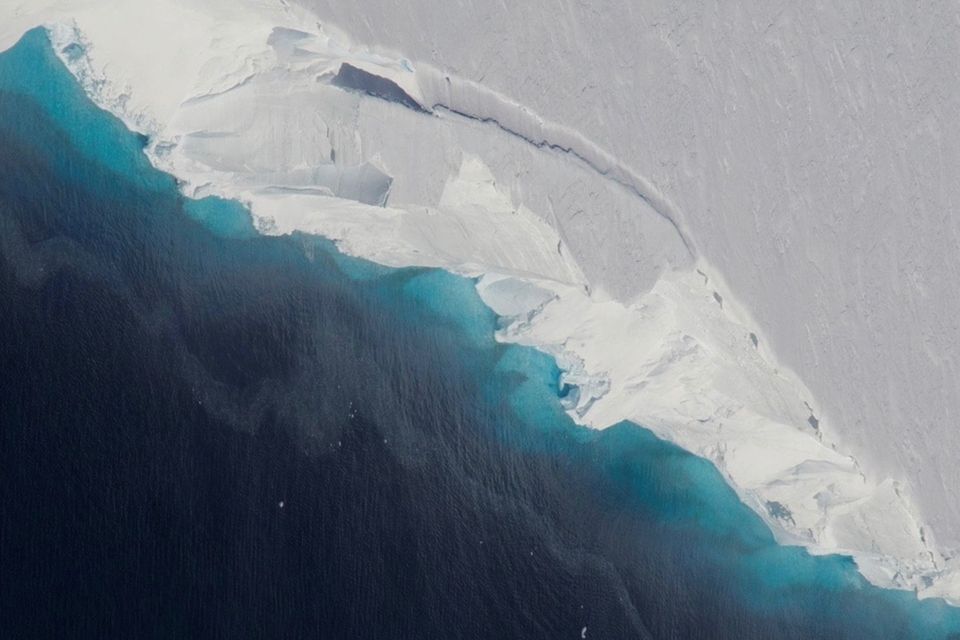Antarctica’s Thwaites Glacier – Threat of Collapse
The Thwaites Glacier ice shelf could collapse within five years

Antarctica’s Thwaites Glacier is retreating rapidly as a warming ocean slowly erases its ice from below, leading to a faster flow, more fracturing and a threat of collapse, according to an international team of scientists. The glacier currently contributes four percent of annual global sea level rise. If it does collapse, global sea levels would rise by several feet – putting millions of people living in coastal locations in danger from extreme flooding.
Thwaites Glacier in West Antarctica is a river of ice the size of Great Britain that has been changing dramatically over the past 30 years. The speed at which it flows into the ocean has doubled, and there are fears that a complete collapse of the glacier could raise sea levels by over 60cm. Critically, the glacier is currently held back by an ice shelf, a floating extension of the glacier that is held in place by an underwater mountain.
Recent research as part of the International Thwaites Glacier Collaboration has shown that this ice shelf is under attack from all sides. It is being melted from below by warm ocean waters, causing it to lose its grip on the underwater mountain. At the same time, massive fractures are forming and growing across the ice shelf surface. The research suggests that at the current rate of change, this critical ice shelf will begin to break apart within the next two decades, with severe consequences for the stability of Thwaites Glacier and ultimately sea level here in the UK.”
The International Thwaites Glacier Collaboration is a collaboration between UK and US scientists, involving over 60 scientists and students. This five year project is aimed at collecting instrument data throughout the glacier and the adjacent ocean, and modelling ice flow and the future of the ice sheet. Their work has revealed major changes in the ice, the surrounding water and the area where it floats of the bedrock below. The ITGC It is one of BAS’ flagship projects and several of our science and support staff are currently being deployed for the start of the 2021-2022 field research season.

Thwaites sits in West Antarctica, flowing across a 120km stretch of frozen coastline. A third of the glacier flows more slowly than the rest – it’s braced by a floating ice shelf which prevents faster flow of the upstream ice. But the brace of ice slowing Thwaites won’t last for long, said Erin Petitt, an associate professor at Oregon State University. Beneath the surface, warmer ocean water circulating beneath the floating eastern side is melting the ice directly from beneath. This floating extension of the Thwaites Glacier will likely only survive a few more years.
Peter Davis, whose team use hot water to drill access holes from the surface of the ice shelf to the ocean cavity hundreds of metres below, adds:
“Warm water is also a threat for the so-called ‘grounding zone’, the area where the glacier lifts off the seabed. The ocean waters in the grounding zone are warm, by polar standards, and salty , and this generates prime conditions for melting the ice shelf from beneath.”
Credit: British Antarctic Survey
Bernd Riebe, JAN 2022

Schreibe einen Kommentar